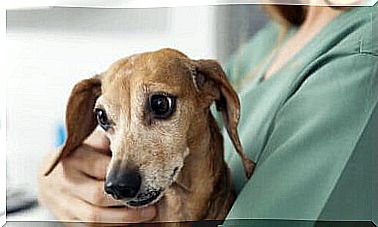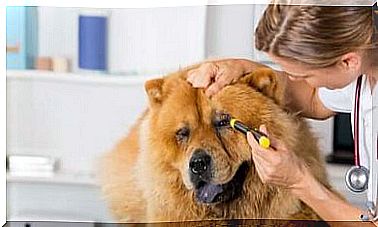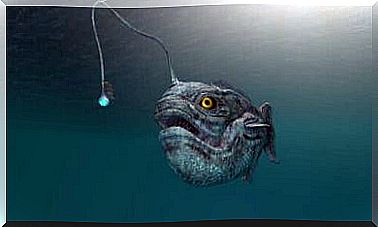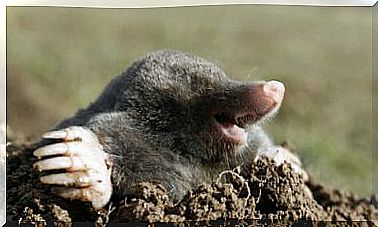The Vietnamese Pig As A Pet

There is a lot of talk these days about having a Vietnamese pig as a pet. However, this little animal has been attracting attention since the 1980s.
This dwarf swine breed, originally from the farms of Vietnam, can live between 12 and 20 years. Its main difference in relation to other races is its peculiar physiognomy and its small size, in addition to its black coloration.
While the common pig can weigh more than 300 kilos, the Vietnamese they usually weigh between 40 and 80 kilos, their body size varies between 40 and 50 centimeters.
However, pigs also need care, such as hygiene, nutrition and exercise to develop in a healthy way. Also, they don’t require as much time from the owners and are very smart.
Below, we will summarize the main advantages of adopting a Vietnamese pig as a pet and the advice for raising it.
Why have a Vietnamese pig as a pet?
We know that dogs and cats are at the top of the ranking of most loved but diverse pets. more exotic animals they are equally capable of filling the house with joy and of faithfully accompanying their owners.
We’ve summarized the advantages of adopting a Vietnamese pig as a pet.
Docile and curious character
These little animals are much more than a funny face; his character is docile, curious and agitated. It’s very rare for them to get aggressive. When they are stimulated, they show a willingness to play, run and discover new activities. Therefore, a pig as a pet can be the ideal companion for growing children.
These little animals are very expressive and able to interact, establishing a deep affective relationship with their owners. They ask for affection, propose joint exercises and take advantage when they have the company of humans and other pets.
training ability
Many people ignore it, but pigs are very intelligent animals that tend to learn easily. Given proper guidance, they can be trained in the same way as dogs and cats; they are even able to respond when called by name and to walk normally in the street.
Many domestic pigs learn to take care of their needs in the proper place. Furthermore, they are able to to memorize and playing tricks, as well as responding to orders given by owners.
Clean and with little hair
Although our prejudice says otherwise, pigs are very hygienic animals that don’t like to live in dirty environments. Like almost all mammals, they have fur, but very few compared to dogs and cats.
Another interesting detail is that they can themselves be responsible for a large part of your body hygiene.
Basic advice on how to care for a Vietnamese pig as a pet
When removing a wild animal from its natural habitat, you need to pay close attention. It is necessary to provide favorable conditions for its healthy development.

As a pet, the pig will need good nutrition, periodic hygiene and regular exercise.
1. Balanced food
Pigs are omnivores and adapt to different types of food, so much so that they tend to be very greedy. However, your daily diet should be rich in fruits and vegetables (around 70%). And, like all mammals, they need lots of fresh, clean water to stay hydrated.
These pigs should not be fed processed rations intended for common pigs. This product is designed to fatten these animals, not nourish them. By eating such rations, the animal can quickly develop overweight.
In the United States, there are processed feeds that are suitable for domestic dwarf pigs. The proportions are adequate to keep your weight balanced, however, these products are still difficult to find elsewhere in the world.
There are some compounds of cereals that can be adapted, becoming the basis of the pig’s diet, but the best option is usually homemade food, following the guidelines of the specialized veterinarian.
2. Environmental hygiene
As we saw earlier, Vietnamese pigs are clean and do not give off a bad smell, on the contrary, it is the lack of cleanliness in the environment that makes the animal filthy and smelly.
So keeping your piggy clean is easy when a sanitized environment is guaranteed. In addition, it is recommended to bathe it every 2 months to improve the health of the skin and hair, especially in summer.
As they come from a temperate zone, the optimum temperature for their development varies between 19 and 25 °C. This species is vulnerable to extreme heat and cold, so you need to keep an eye on the climate of the environment.
3. Exercise and health care
In their natural habitat, these animals usually walk freely on farms and mate very often, which means a high expenditure of energy. A Vietnamese pig as a pet will need physical exercise and free space to maintain its weight.
When we provide them with good nutrition and exercise, there is no need to take care of their health. However, it is necessary to vaccinate them periodically in the same way we do with dogs and cats.









